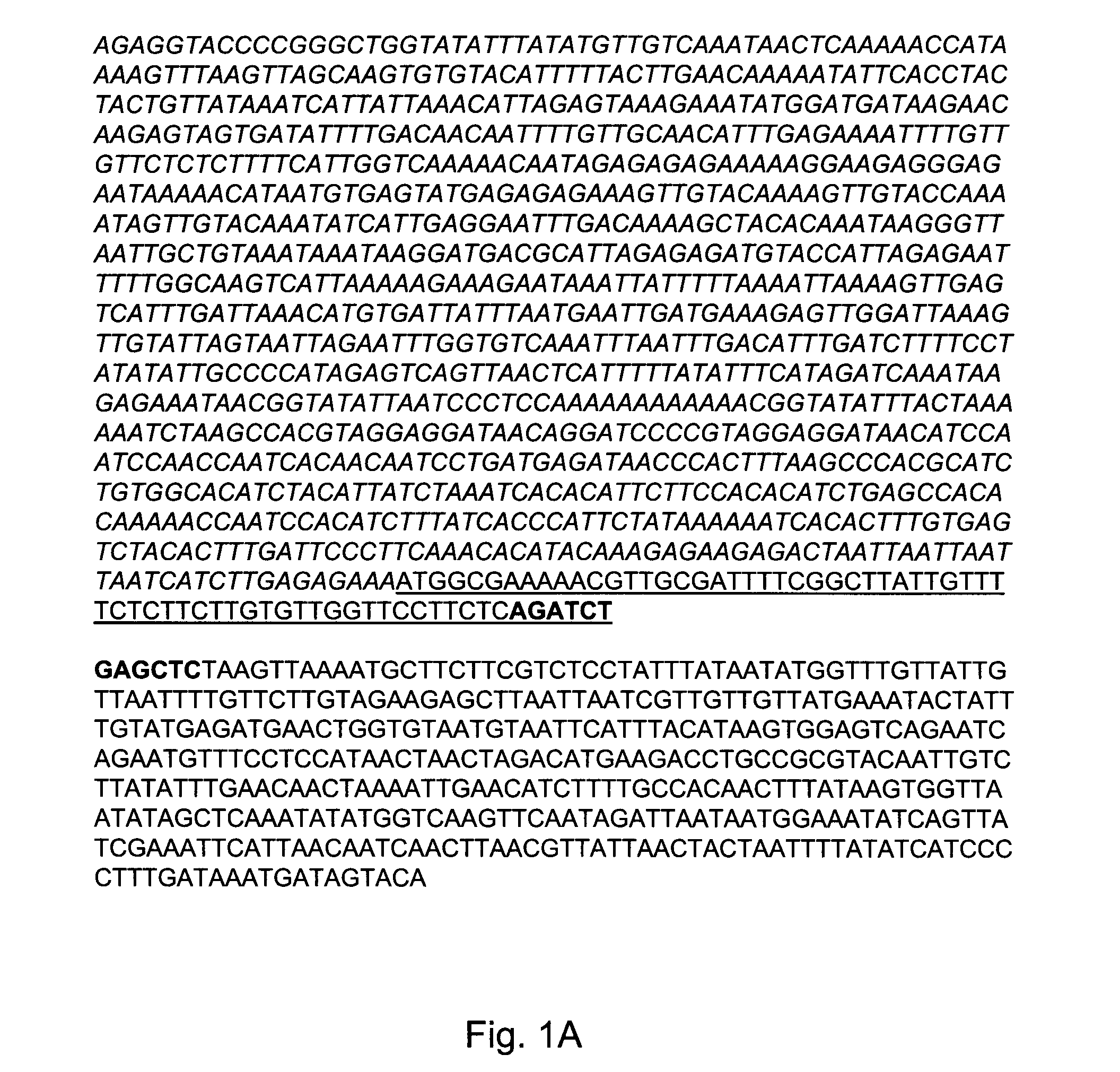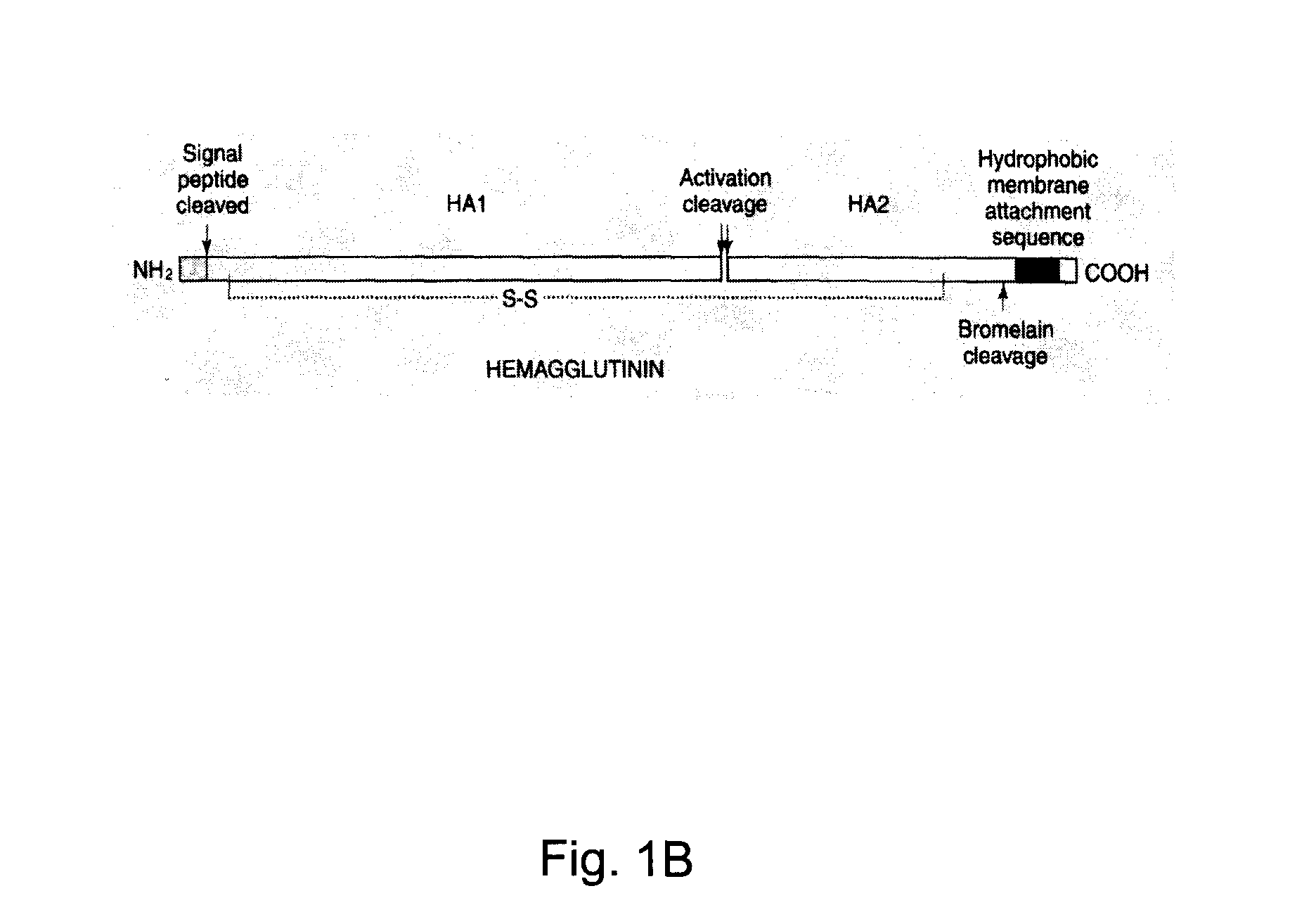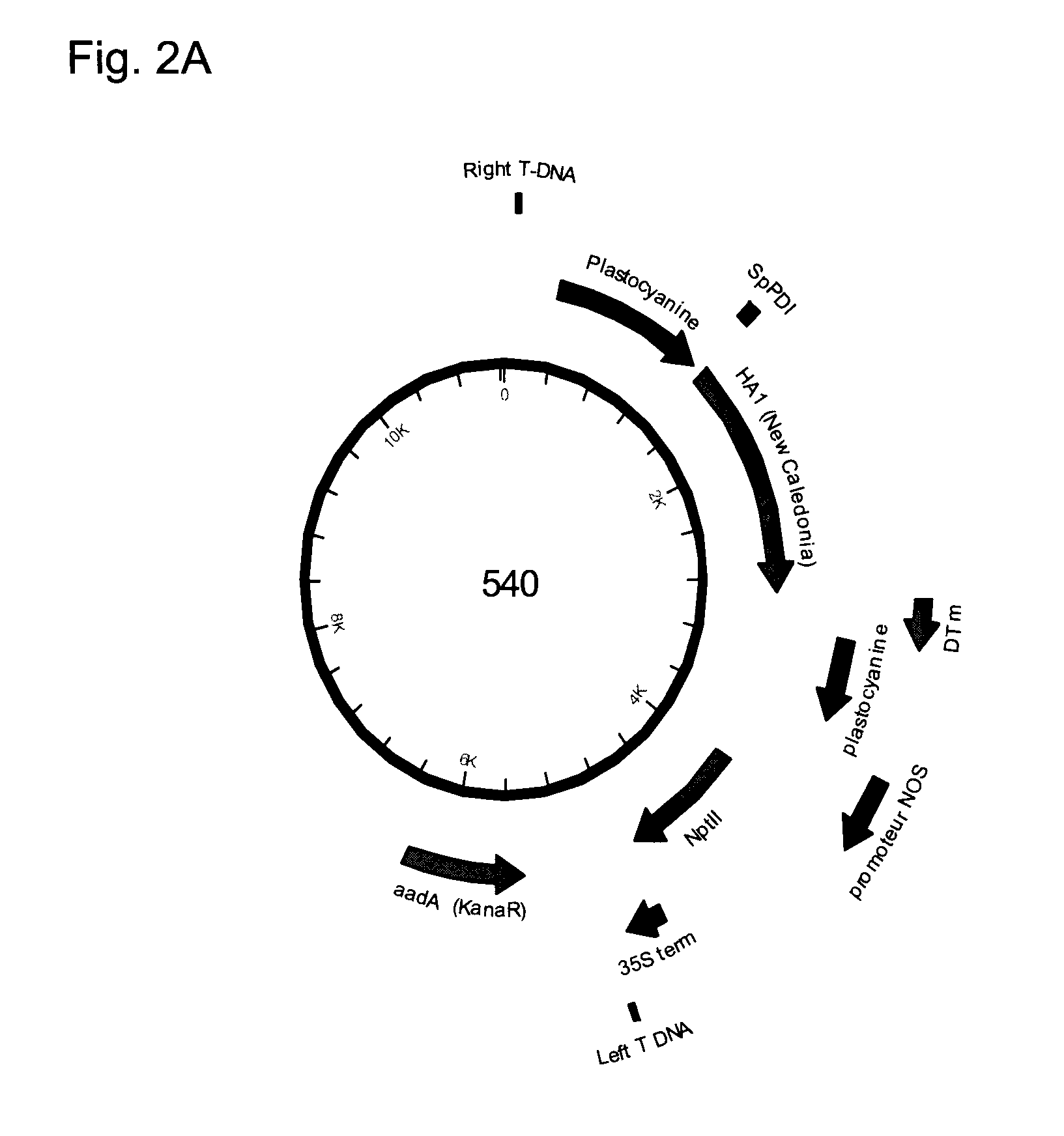Influenza virus-like particles (VLPS) comprising hemagglutinin produced within a plant
a technology of viruslike particles and hemagglutinin, which is applied in the direction of immunological disorders, drug compositions, peptides, etc., can solve the problems of increasing the risk of emergence or the transmission to humans of a subtype endemic in animals, and the risk of a new subtype or a new subtype is always present, so as to facilitate the capture of glycoprotein antigens, strengthen the immune response, and enhance the immune respons
- Summary
- Abstract
- Description
- Claims
- Application Information
AI Technical Summary
Benefits of technology
Problems solved by technology
Method used
Image
Examples
example 1
Transient Expression of Influenza Virus A / Indonesia / 5 / 05 (H5N1) Hemagglutinin by Agroinfiltration in N. benthamiana Plants
[0292]The ability of the transient expression system to produce influenza hemagglutinin was determined through the expression of the H5 subtype from strain A / Indonesia / 5 / 05 (H5N1). As presented in FIG. 11, the hemagglutinin gene coding sequence (Acc. #EF541394), with its native signal peptide and transmembrane domain, was first assembled in the plastocyanin expression cassette-promoter, 5′UTR, 3′UTR and transcription termination sequences from the alfalfa plastocyanin gene—and the assembled cassette (660) was inserted into to a pCAMBIA binary plasmid. This plasmid was then transfected into Agrobacterium (AGL1), creating the recombinant strain AGL1 / 660, which was used for transient expression.
[0293]N. benthamiana plants were infiltrated with AGL1 / 660, and the leaves were harvested after a six-day incubation period. To determine whether H5 accumulated in the agroin...
example 2
Characterization of Hemagglutinin-Containing Structures in Plant Extracts Using Size Exclusion Chromatography
[0295]The assembly of plant-produced influenza hemagglutinin into high molecular weight structures was assessed by gel filtration. Crude protein extracts from AGL1 / 660-infiltrated plants (1.5 mL) were fractionated by size exclusion chromatography (SEC) on Sephacryl™ S-500 HR columns (GE Healthcare Bio-Science Corp., Piscataway, N.J., USA). Elution fractions were assayed for their total protein content and for HA abundance using immunodetection with anti-HA antibodies (FIG. 13A). As shown in FIG. 13A, Blue Dextran (2 MDa) elution peaked early in fraction 10 while the bulk of host proteins was retained in the column and eluted between fractions 14 and 22. When proteins from 200 μL of each SEC elution fraction were concentrated (5-fold) by acetone-precipitation and analyzed by Western blotting (FIG. 15A, H5), hemagglutinin (H5) was primarily found in fractions 9 to 14 (FIG. 13B)...
example 3
Isolation of H5 Structures by Centrifugation in Sucrose Gradient and Observation Under Electron Microscopy
[0299]The observation of hemagglutinin structure under electron microscopy (EM) required a higher concentration and purity level than that obtained from SEC on crude leaf protein extracts. To allow EM observation of H5 structures, a crude leaf protein extract was first concentrated by PEG precipitation (20% PEG) followed by resuspension in 1 / 10 volumes of extraction buffer. The concentrated protein extract was fractionated by S-500 HR gel filtration and elution fractions 9, 10, and 11 (corresponding to the void volume of the column) were pooled and further isolated from host proteins by ultracentrifugation on a 20-60% sucrose density gradient. The sucrose gradient was fractionated starting from the top and the fractions were dialysed and concentrated on a 100 NMWL centrifugal filter unit prior to analysis. As shown on the Western blots and hemagglutination results (FIG. 14A), H5...
PUM
| Property | Measurement | Unit |
|---|---|---|
| Immunogenicity | aaaaa | aaaaa |
Abstract
Description
Claims
Application Information
 Login to View More
Login to View More - R&D
- Intellectual Property
- Life Sciences
- Materials
- Tech Scout
- Unparalleled Data Quality
- Higher Quality Content
- 60% Fewer Hallucinations
Browse by: Latest US Patents, China's latest patents, Technical Efficacy Thesaurus, Application Domain, Technology Topic, Popular Technical Reports.
© 2025 PatSnap. All rights reserved.Legal|Privacy policy|Modern Slavery Act Transparency Statement|Sitemap|About US| Contact US: help@patsnap.com



